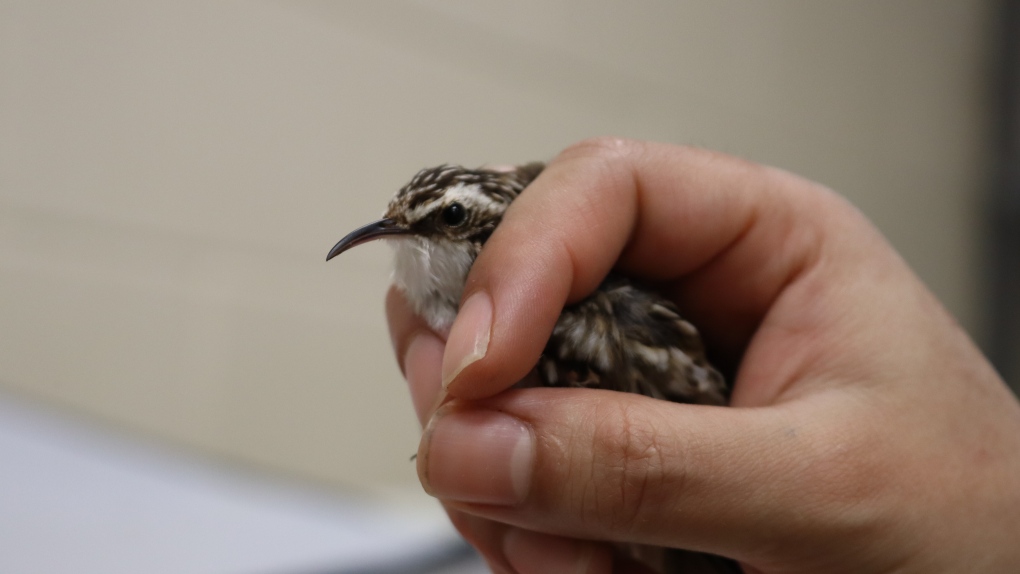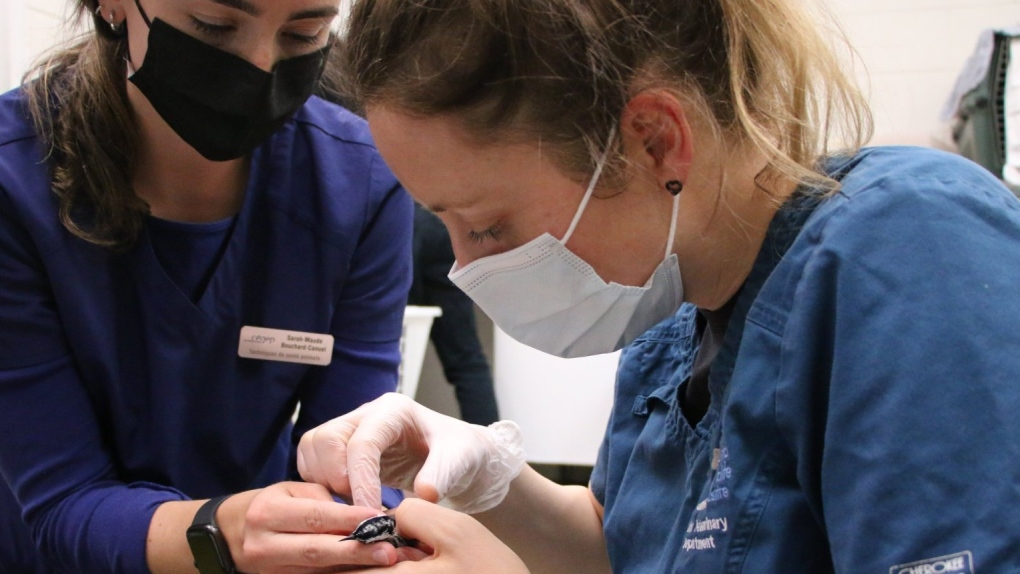Millions of birds die in Canada at this time of year. Here’s what you can do
Thousands of birds in Toronto fly into windows and die at this time of year as they journey across the last stretch of their migration, deaths that the city says are completely preventable.
“We’re looking at animals that have essentially head trauma,” Dr. Heather Reid, head veterinarian at Toronto Wildlife Centre (TWC), said.
These birds are part of an estimated 25 million that die in Canada each year from flying into windows.
Birds can’t appreciate glass, or reflective surfaces, which appear to project the outdoors, Reid explained. As a result, they strike the surface and in some cases, die.
The seasonal uptick of these deaths is tied to the current migration period, which began earlier this month and stretches till the end of May, according to the City of Toronto. The journey spans thousands of kilometres, from central and South America, to northern breeding grounds.
Already, Reid said TWC has 40 birds in their care, recovering from head trauma related injuries.
“They’re being treated for their injuries or any of the broken bones or shock. They’ll be put on oxygen therapy if needed. They’ll be given the proper medications, anti-inflammatories, we’re basically managing their head trauma and their eye injuries and any fractures that they have,” Reid said.
 A tiny Brown Creeper recovers in the care of Toronto Wildlife Centre (TWC). Beyond preventing animal suffering, birds play vital roles in our cities, including pest control, pollination, and seed dispersal, making their survival key in maintaining a healthy ecosystem, according to the government of Canada’s prevention guidelines.
A tiny Brown Creeper recovers in the care of Toronto Wildlife Centre (TWC). Beyond preventing animal suffering, birds play vital roles in our cities, including pest control, pollination, and seed dispersal, making their survival key in maintaining a healthy ecosystem, according to the government of Canada’s prevention guidelines.
Most birds migrate at night, using the stars and the moon to guide their path, which becomes a problem the closer they get to urban centres.
“They end up getting drawn towards the lights of our cities and our buildings and they become so confused, and they get trapped in the corridors of cities, they often become exhausted, and that’s why we see so many birds becoming injured,” Reid said.
Once TWC rehabilitates the birds, and they’ve recovered from their injuries, they practice flying in outdoor aviaries before they are released on the far side of the city to avoid navigating the urban maze.
 The Toronto Wildlife Centre medical team treats a bird after colliding with a window (TWC). The City of Toronto is encouraging the public to turn off unnecessary lights at night, internally and externally, when possible to reduce migratory bird deaths.
The Toronto Wildlife Centre medical team treats a bird after colliding with a window (TWC). The City of Toronto is encouraging the public to turn off unnecessary lights at night, internally and externally, when possible to reduce migratory bird deaths.
To set an example, last December, Toronto city council decided to turn off unnecessary lights in city buildings during migration season.
TWC suggests covering a window with a pattern, or adding visual markers that can be spread across the entire surface, to make it more visible to birds.
If you come across an injured bird, TWC recommends gently putting a tea towel or cloth over top, placing the bird in a paper bag or small cardboard box and contacting a licensed wildlife rehabilitator.
View original article here Source









